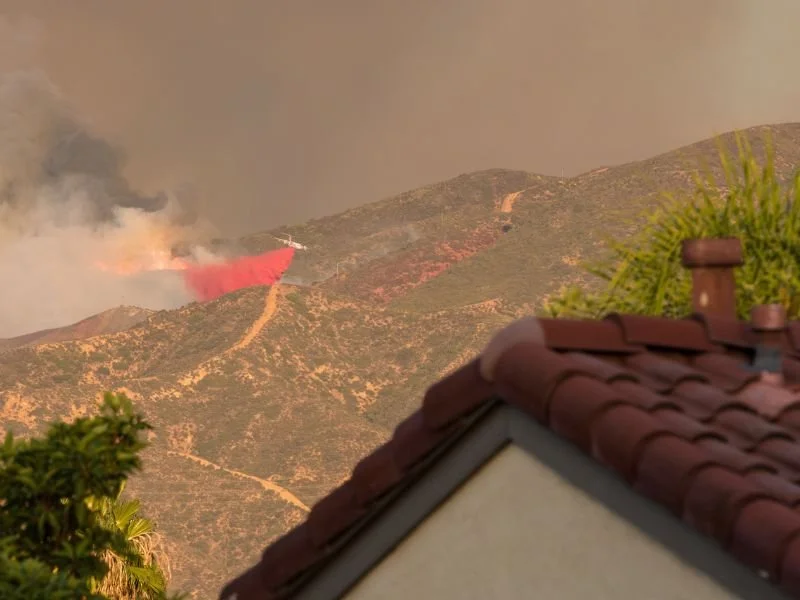Can Your Roof Help Protect Your Home from Wildfires?
Wildfires are a growing concern in Northern California, where dry summers and high winds can turn small sparks into massive blazes. Choosing the right roofing materials and maintenance strategies is essential for reducing your home’s vulnerability to wind-blown embers. Below, we explore how fire-resistant roofing, proper ventilation, and smart landscaping tactics can all work together to protect your property in wildfire-prone regions.
Fire-Resistant Roofing Materials for Northern California Homes
Metal panels, concrete or clay tiles, and certain asphalt shingles can achieve Class A fire ratings, meaning they’re more resistant to flame spread and heat. Metal roofing is a standout option, as it’s non-combustible and does not warp or burn under intense heat. Tile roofing, on the other hand, offers a dense barrier that helps deflect embers, provided it’s installed with proper underlayment. Some asphalt shingles also meet Class A standards when paired with the right materials underneath. Though these fire-resistant upgrades may have a higher upfront cost, they often pay off in reduced insurance rates and greater peace of mind.
Preventing Ember Intrusion with Proper Roof Design
Embers are among the leading causes of house fires during wildfires, and they can travel surprisingly long distances in strong winds. If your roof design features complex angles, valleys, or overhangs, these nooks can collect leaves and debris, effectively creating tinder for stray embers. Installing tight-fitting flashing around chimneys, vents, and skylights further minimizes the gaps where sparks might enter. Keep gutters clear of debris so embers have fewer places to settle. A simpler roof design with fewer protrusions often proves easier to defend when wildfire season arrives.
Defensible Space: A Critical Aspect of Wildfire Readiness
Your roof is only one component of a broader fire-prevention strategy. Defensible space—a cleared or well-maintained zone around your home—plays a massive role in slowing or stopping a wildfire.
Clear or maintain a well-kept area around your home to slow or stop wildfires
Keep shrubs trimmed and remove dry or dead vegetation
Store combustible items, such as firewood, far from your house
Opt for hardscaping features and nonflammable landscaping materials
Minimize flammable vegetation to prevent a direct flame path to your property
Combine defensible space with a fire-rated roof for stronger overall protection
Upgrading Attic Ventilation for Wildfire Protection
Adequate attic ventilation maintains energy efficiency and helps regulate indoor temperatures, but it can also act as a pathway for embers to infiltrate. Switching to ember-resistant vents is a powerful step in wildfire-proofing your roof. These specialized screens or baffles filter out small particles while allowing airflow to continue. Make sure to inspect your attic for any cracks, unsealed joints, or openings around pipes and cables. When combined with Class A-rated roofing materials, an ember-resistant ventilation system significantly lowers your chances of suffering fire damage.
Regular Maintenance to Maximize Your Roof’s Wildfire Safety
Even the best roofing materials lose effectiveness over time if they aren’t properly maintained. Loose flashing, missing shingles, or deteriorated sealants can give embers easy access to your roof’s underlayment. Scheduling routine inspections with a knowledgeable roofing contractor ensures that hidden vulnerabilities are discovered and fixed before fire season peaks. Removing debris like pine needles, leaves, and branches from your roof and gutters also reduces potential fuel sources that embers could ignite. By tackling small tasks throughout the year, you maintain a stronger defense against sudden sparks.
Strengthening your roof against wildfires may involve an initial investment, but it can save immeasurable stress and expense in the long run. At Northern Counties Roofing Systems, we specialize in installing and maintaining fire-resistant roofing solutions tailored to Northern California’s climate. When paired with proper ventilation upgrades, regular inspections, and attentive landscaping, a fire-rated roof becomes a formidable barrier against airborne sparks and extreme heat.

